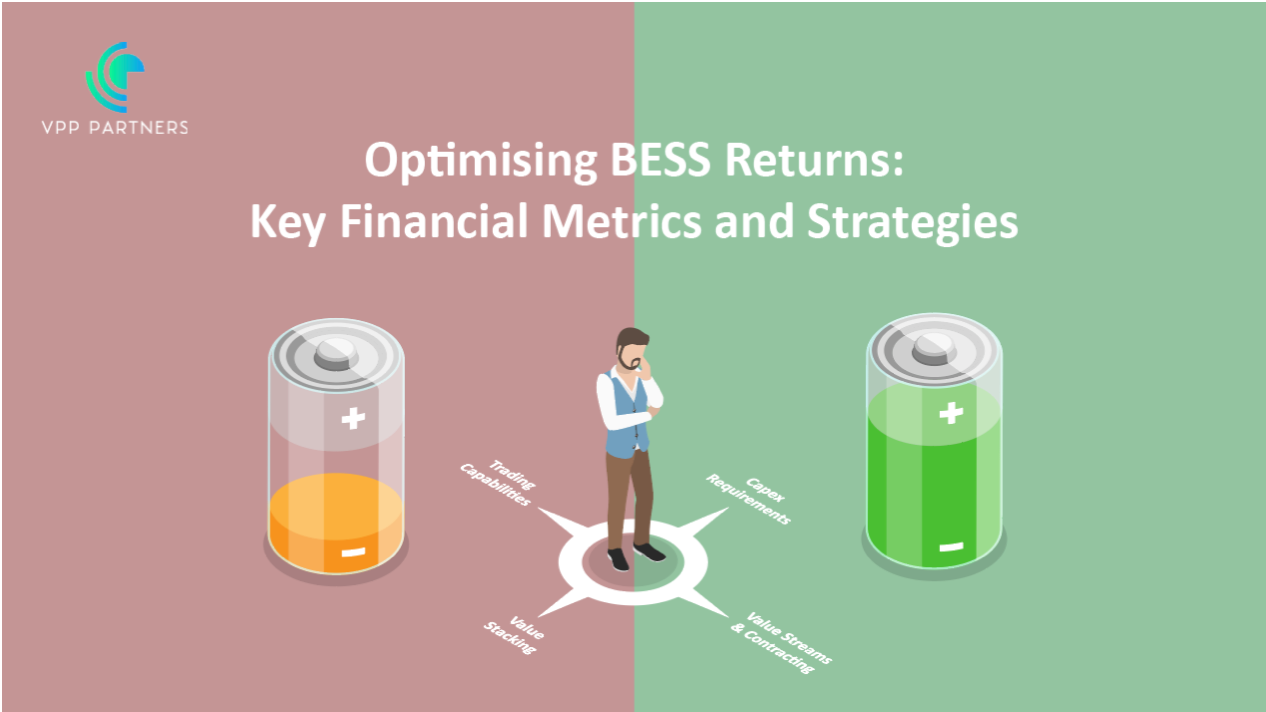Understanding Risk-Adjusted Returns for BESS Projects
To unlock the full potential of the growing Battery Energy Storage System (BESS) market, it's crucial to correctly assess returns to attract more investment in sustainable energy projects. With the rapid evolution of energy technologies and market dynamics, investors and developers alike face challenges in evaluating risk-adjusted returns, which are essential for securing funding and ensuring the financial success of these ventures. Without accurate and comprehensive assessments, projects risk being underfunded or failing to achieve their intended outcomes, stalling progress in the clean energy transition.
Risk-adjusted returns for Battery Energy Storage System (BESS) projects measure the profitability of the investment while accounting for the risks involved. This is crucial because BESS projects can have significant financial and operational risks, such as technology failures, regulatory changes, and market volatility.
Key Factors in Risk-Adjusted Returns for BESS Projects
- Revenue Streams: BESS projects can generate revenue through various means, including energy arbitrage, frequency regulation, and capacity payments. Each revenue stream has its own risk profile.
- Cost Considerations: Initial capital costs, operational and maintenance costs, and potential costs related to technology failures or safety incidents must be factored in.
- Market Risks: Fluctuations in energy prices, changes in regulatory policies, and competition from other energy sources can impact returns.
- Technological Risks: The reliability and lifespan of the battery technology used can affect the project’s financial performance. Incidents like thermal runaways or other failures can lead to significant losses.
- Financial Metrics: Common metrics used to assess risk-adjusted returns include the Sharpe ratio, which measures the excess return per unit of risk, and the Sortino ratio, which focuses on downside risk.
A thorough project-level analysis is essential to accurately assess the financial viability of a BESS project. This includes evaluating technical merits, market conditions, and potential risks to optimise returns and ensure long-term success.
How We Can Help
At VPP Partners, we specialise in helping companies identify and quantify the risks associated with BESS projects. Our structured approach ensures that all potential risks are thoroughly assessed and managed. Here’s how we can assist:
- Risk Mapping: Mapping your opportunity against your risk appetite and risk tolerances.
- Initial Assessment: We conduct preliminary meetings to understand your project’s scope, goals, and context.
- Risk Identification: Using techniques like brainstorming sessions and expert interviews, we identify risks related to technology, market, finance, and operations.
- Risk Analysis: We perform qualitative and quantitative risk analysis using tools like Failure Mode and Effects Analysis (FMEA) and decision tree analysis.
- Risk Quantification: We use statistical models and financial metrics to estimate the cost implications of risks.
- Risk Mitigation Planning: We develop strategies to mitigate identified risks, including preventive measures, contingency plans, and insurance options.
- Risk Tracking & Governance: Develop value at risk tracking and controls to ensure operations can be adapted as markets and technology changes.
- Implementation and Monitoring: We help implement risk mitigation strategies and monitor their effectiveness, ensuring your project stays on track.
- Reporting and Communication: We prepare regular reports and conduct meetings to keep stakeholders informed about risk management activities and outcomes.
By partnering with us, you can ensure that your BESS projects are not only profitable but also resilient to the various risks they may face. Contact us today to learn more about how we can support your energy storage initiatives.
Share on...



